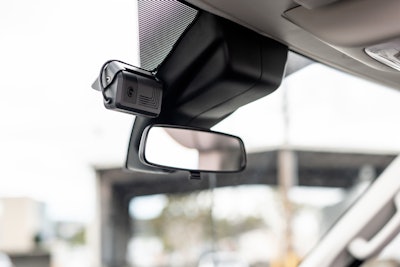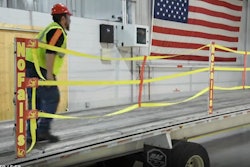
Every month has designations from governments and private groups to bring awareness to certain causes. April has several, but the one that stands out most is Distracted Driving Awareness month.
This year, awareness may be more important than ever for motorists to get back on track.
Motor carriers have already made big strides to lower the risks of distracted driving. Many realize that having policies that prohibit the use of handheld devices while driving is not enough, and are using technology such as inward-facing cameras to enforce those policies by recording distracted events and other types of risky behaviors.
A growing number of fleets are using technology that alerts drivers with visual and audible cues the instant they become distracted or fatigued. Technology also can detect handheld device use and smoking, among other behaviors, with a high degree of accuracy by tracking drivers' eyes, head movements and objects nearby.
The technologies fleets are using to minimize distractions offer a stark contrast to the trends in consumer behaviors during the past year.
A false sense of security
Nationwide, distracted driving killed 3,142 people in 2019, which was a 10% increase from 2018, according to the National Highway Traffic Safety Administration (NHTSA). Early data from 2020 shows that the trend is continuing upward.
[Related: Analysis shows pandemic increases fleet risks for distraction]
Studies from telematics service providers that capture data from personal and commercial vehicles show that speeding events increased significantly last year. A recent survey by Travelers insurance also shows that distracted driving events went up.
A recent Travelers 2021 Risk Index on distraction was completed using survey responses from more than 1,000 consumers and business managers. The survey found that public perception on the risks of distraction has changed for the worse.
One in four drivers surveyed think roads are safer today than before the pandemic.
“Traffic volumes were lower during the early days of the pandemic, which may have given drivers a false sense of security,” said Chris Hayes, Travelers vice president of workers compensation and transportation risk control.
Compared to the 2020 Risk Index, more respondents admitted they have been using mobile devices in the following unsafe ways while driving:
- Texting or emailing (26%, up from 19% pre-pandemic).
- Checking social media (20%, up from 13% pre-pandemic).
- Taking videos and pictures (19%, up from 10% pre-pandemic).
- Shopping online (17%, up from 8% pre-pandemic).
[Related: Trucking industry throws its support behind distracted driving proposal]
The increase in risky driving behaviors in 2020 has possibly contributed to the increase in vehicle deaths. According to the National Safety Council, 2020 motor vehicle deaths were up 8% from 2019 – the highest percentage increase in 13 years.
Standardizing safety
With a background in commercial trucking insurance, Hayes said motor carriers understand well the risks of distraction. Where most improvement is needed is for businesses that operate non-regulated fleets to have clear policies against distracted driving and enforcement tools.
Compared to the 2020 Travelers Risk Index results, a higher number of employers in the recent survey are concerned about liability from distracted driving. More than one-quarter (27%) indicated that they worry a great deal about their liability should an employee be involved in a crash because of distracted driving, up from 21% pre-pandemic.
Despite these concerns, the survey found their workers are feeling more pressure to be available. Hayes describes the need that workers feel to be connected as a more of a fear of missing out. One in four respondents said they answer work-related calls and texts while behind the wheel because of the following reasons:
- 46% think it might be an emergency.
- 29% think their supervisor would be upset if they don’t answer.
- 22% are unable to mentally shut off from work.
People feeling more pressure to stay connected while driving is not imaginary. In fact, 48% of surveyed business managers expect employees to respond frequently to work-related calls, texts or emails. This was up from 43% in the pre-pandemic 2020 Travelers Risk Index.
Hayes recommends that businesses of all types have distracted driving policies for any employee that spends part of their time working on the roadway. Those policies should be communicated to family members, customers and anyone else who may be calling them.
Additionally, he recommends that safe driving should be part of companies’ performance evaluations and hiring criteria for various types of jobs, not just for full-time drivers. The same policies that commercial drivers have to sign off on should apply to all types of jobs, so that motorists who surround professional drivers on the road are operating with the same standards.
Businesses should never expect their workers to respond to a message, or to start or finish a conversation while driving.
“That is the environment that every tractor trailer driver is in,” Hayes said.












